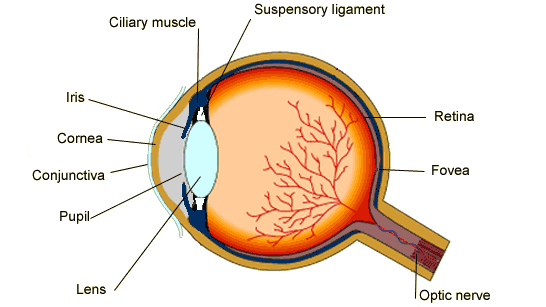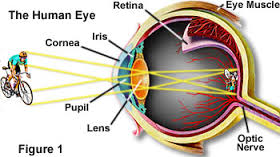What are the functions of the cornea, pupil, lens, retina, and optic nerve?
1 Answer
Together they work to send visual information to the brain.
Explanation:
 Cornea This is the front part of the tough outer coat that is transparent. It refracts light (bends it as it enters the eyes to ensure it is in the right place).
Cornea This is the front part of the tough outer coat that is transparent. It refracts light (bends it as it enters the eyes to ensure it is in the right place).
Lens A transparent, biconvex, flexible disc behind the iris. Focuses the light onto the retina ( the light sensitive part of the eye),
Retina The lining of the back of the eye containing two types of photoreceptor cells - Rods (sensitive to dim light, black and white) and Cones (sensitive to colour). This detects the light in the way a film would in a camera.
Optic nerve A cranial nerve (from the brain) that carries impulses information from the eyes to the brain where it can be interpreted.
Pupil The pupil is essentially a hole in the center of your iris that controls how much light enters the eye. It's size is controlled by the relaxing and contracting of the iris. When there is high light intensity, the pupil shrinks while it grows in low light intensity. This is to ensure there is enough light for vision without damaging the sensitive retina.

So, in order of how we see, here are their roles.
1) Light passes through the cornea covering the eye which refracts it.
2) The iris regulates the size of the pupil which controls how much light is allowed to enter the eye.
3) Behind the pupil is the lens that focuses light (or an image) onto the retina .
4) The retina contains many photoreceptor cells that convert light into electric signals.
5) These signals are processed further then travel through the optic nerve to be collected and interpreted by the brain.
I hope this helps, let me know if I can do anything else:)
